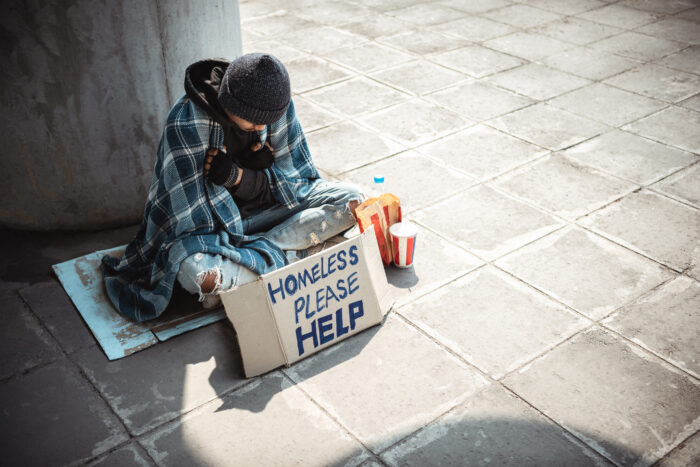
By Tom Ferraro
The writer, a former reporter, is a volunteer at Community Action Agency of Anne Arundel County.
A contractor turned to alcohol after his wife died. A single mom with two children welcomed food from a stranger. A certified nursing assistant and her working teenage son couldn’t afford a rent increase.
They were among those who experienced homelessness in Maryland last year, totaling nearly 6,000 one winter night, according to an annual federal count. Young and old, males and females, many took refuge in shelters. Others slept in parks or on the street. Some hunkered down in cars if fortunate enough to have one.
“Most never expected to experience homelessness,” said Lara Ippolito, a spokesperson at The Light House, a homeless prevention and support center in Annapolis. “Homelessness can be a devastating cycle.”
The cycle can begin with an illness or car breakdown that prevents one from working, earning a paycheck, and paying rent. That can trigger eviction and stress. And that can lead to substance abuse and more challenges.
Leading causes of homelessness include drugs and alcohol, joblessness, domestic abuse, and poverty. An increase in homelessness nationwide from 2007 to 2023 has been traced, in part, to the rising cost of labor and building materials, the pandemic, and lack of affordable housing.
Anne Arundel County, one of Maryland’s wealthiest counties, is indicative of the challenge. Last year, its county executive, Steuart Pittman, proposed requiring builders to include affordable housing for “essential workers” — including nurses, teachers, and police officers — in any new development.
But despite the support of labor, church, and civil rights groups, the county council, amid pushback from developers, defeated the measure 4-3. Pittman immediately began seeking alternative relief. “It’s the right thing to do,” he said.
Maryland Gov. Wes Moore sent legislation backed by Pittman to the General Assembly this year to address “a true housing crisis” by building and creating more affordable housing and taking steps to reduce poverty and evictions. With Maryland’s housing shortage at an estimated 96,000 units, Moore said, “Our state faces a problem of supply and demand. Prices go up because we don’t have enough homes. Building more will bring prices down.”
With bipartisan votes, the General Assembly approved the legislation, prompting the governor to declare, “We made real progress” in addressing a growing national problem.
Once a year, the U.S. Department of Housing and Urban Development has designated groups nationwide conduct its “Point-In-Time Count” of those experiencing homelessness. On a single night in January 2023, an estimated 653,104 people were identified as experiencing homelessness across the U.S. The figure for Maryland was 5,865, with 1,146 of them under the age of 18, and 458 over the age of 64. There were 3,474 males and 2,355 females.
The 2023 Point-in-Time (PIT) nationwide count was the highest since HUD began such reporting in 2007, up 12% from 2022. However, the actual number was even higher, given not all people experiencing homelessness are seen and counted.
The count includes those in shelters for the homeless and those unsheltered — such as on the street or in a park. But it does not consider those without a permanent home who spend a night in a motel or doubling up at another’s residence.
While a chief cause of homelessness is failing to have someone to temporarily move in with, shelters, churches, and anti-poverty groups help people to safety.
The contractor battling addiction after his wife’s death received shelter, food, and counseling. “I have a safe home now,” he says. “I’m sober and I am proud of where I am today.”
The single mother of two children got a job and affordable housing for her young family. “I’m so grateful,” she says.
The certified nursing assistant and her teenage son lived temporarily in a shelter where they received assistance to move into permanent housing.
Others remain homeless, often “hiding in plain sight,” fearful if it became known they don’t have a permanent residence, it could cost them their job and custody of their children.
“The image of the homeless is someone who makes bad choices,” says Hannah Breakstone of the Anne Arundel and Annapolis Coalition to End Homelessness. “But a lot of times, that’s not the case. People are doing the best they can with what they have.”
We at the Community Action Agency of Anne Arundel County, the designated anti-poverty agency for Annapolis and Anne Arundel County, say those in homelessness deserve understanding and help. Homelessness does not discriminate. It can happen to anyone.




 Creative Commons Attribution
Creative Commons Attribution